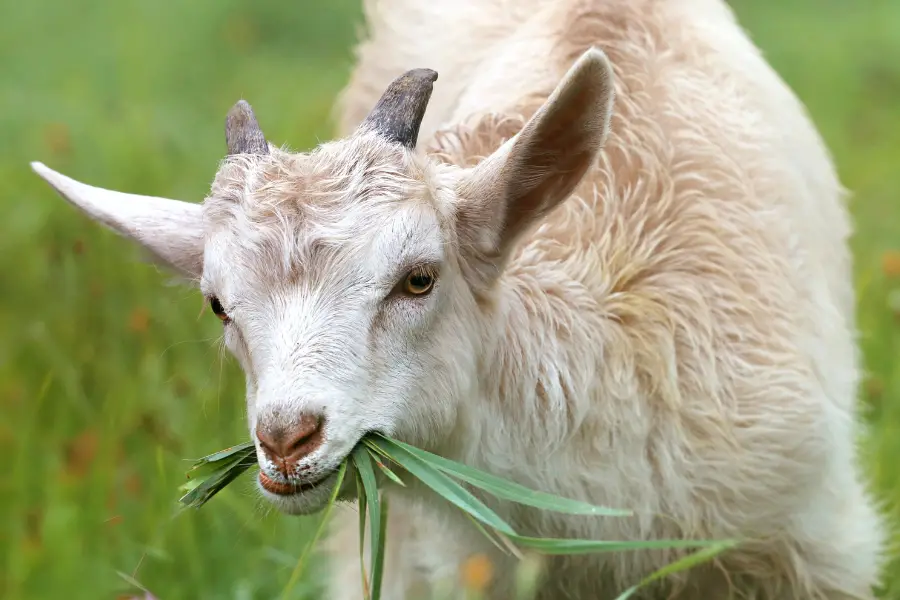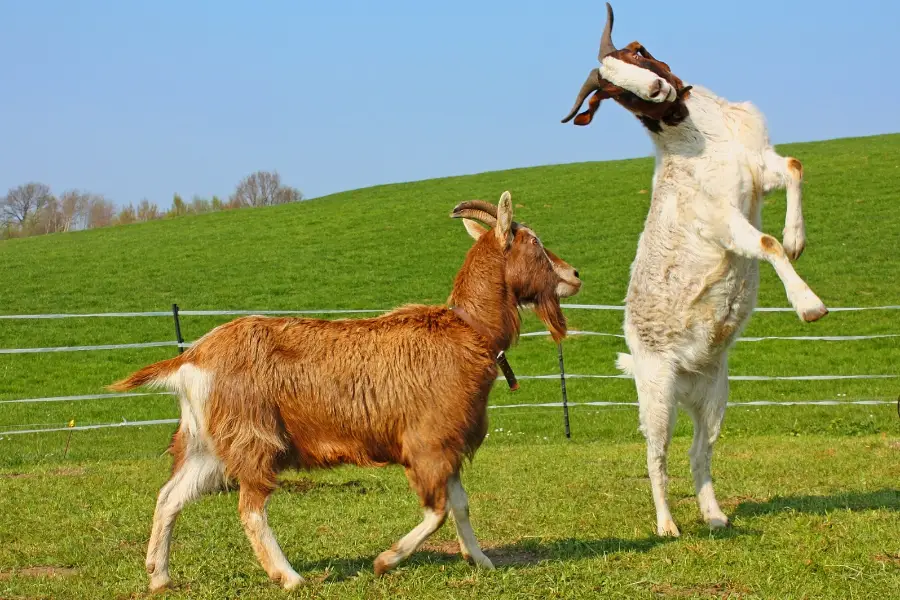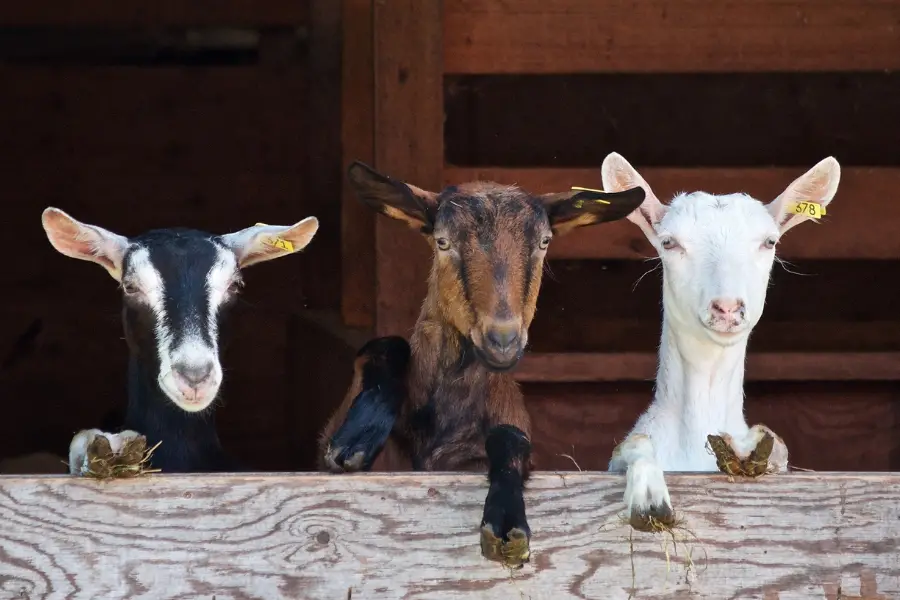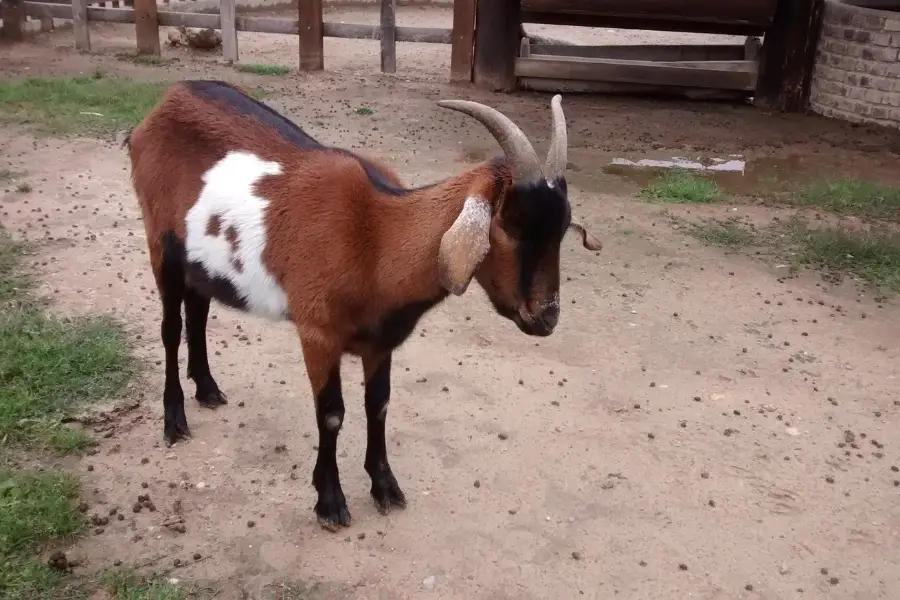
IMPORTANT: Urinary Calculi in Goats is a MEDICAL EMERGENCY
If you think that your goat has urinary calculi, CALL YOUR VETERINARIAN IMMEDIATELY. Urinary calculi will NOT resolve itself on its own. DO NOT DELAY TREATMENT. Once symptoms begin, your goat’s urethra or bladder can rupture within 24-48 hours, which can result in the painful death of your animal.
In this complete guide to urinary calculi in goats, we answer the most common questions that farmers ask about this serious condition, including what it is, symptoms, treatments, and more.
Table of contents
- IMPORTANT: Urinary Calculi in Goats is a MEDICAL EMERGENCY
- What are the Signs and Symptoms of Urinary Calculi in Goats?
- What are Urinary Calculi in Goats?
- Phosphorus Stones are Usually the Cause
- Improper Feeding Leads to Urinary Calculi
- Calcium to Phosphorus Ratio – How much Phosphorous is Too Much?
- Problems with A Grain Heavy Diet
- Other Causes and Contributing Factors of Urinary Calculi
- Urinary Calculi in Goats Treatment – Main Treatments
- Home Remedies for Urinary Calculi in Goats
- Preventing Urinary Calculi
- Urinary Calculi in Goats Video
- Urinary Calculi – Tips from a Vet – Dr. Robert Cobb, DVM
What are the Signs and Symptoms of Urinary Calculi in Goats?
Since your goat cannot talk to you and tell you how it is feeling, you must look for changes in appearance and behavior in your goats. If you notice ANY of these signs or symptoms, DO NOT DELAY – CONTACT YOUR VET IMMEDIATELY. (Clinical symptoms may vary.)
- Restless or anxious behavior
- May repeatedly stand up then lay down
- May pace
- Making crying noises
- Tail twitches or twists
- Depression
- Bruxism (teeth grinding)
- Abdominal pain
- Goat may kick at its belly
- Increased vocalization
- Sensitive to touch
- Goat looking at its side
- Goat may isolate itself from its herd
- Loss of appetite
- Not interested in food
- Not interested in water
- Anorexia
- Weakness
- Experience difficulty urinating
- Not a steady urine stream
- Urine may come out as sprinkles or dribbles, sometimes bloody
- Straining and stretching out
- Animal may frequently try to urinate – and may strain forcefully
- “Hunched up” or “Humped up” appearance or body posture
- Dried crystals, grit, or drops of urine (or bloody urine) may be visible on the the preputial hairs
- Apparent Constipation
- Rectal prolapse
- Goat may be constipated or appear to be constipated
- Straining to pass feces
- Note that in many instances, goats that seem to be constipated actually are suffering from urinary calculi
- Distension of abdomen
- Swelling under their belly
- Bloat
- Ventral pitting edema
- Water Belly Symptoms
- If there is liquid pooling in your goats belly, then your goat is in crisis. The animal needs emergency veterinary care. If there is fluid surrounding the prepuce, then the urethra may have ruptured. If the goat’s abdomen becomes pear shaped with fluid inside, it is likely that the animal’s bladder has ruptured. If urine collects in the animal’s abdomen, your vet may be able to operate, but the outcome is typically poor. Your vet will have to determine whether the goat can be saved.
Signs of Urinary Straining with Veterinarian Laura Schwerdtfeger
Goats Most at Risk for Urinary Calculi
The goats most at risk for urinary calculi are males, especially young wethers (castrated males), and goats used for show purposes.
Why are Young Wethers at Risk?
Once the goat is castrated, its urethra stops growing. Thus, an animal castrated too young will have a urethra with a narrow diameter, and small solids can get trapped. It is best not to castrate young bucks until they are 5 or 6 months old, with 4 months being the absolute minimum.
Why are Goats Used for Show Purposes at Risk?
Goats being prepped for show are typically fed concentrates rather than grass and hay. The grain based feeds tend to be high in phosphorous, which is the main mineral that causes the formation of calculi. Additionally, some goats are intentionally dehydrated the enhance the appearance of their muscles at a show. This is a terrible practice. Goats should have access to fresh, clean water at all times.
Why are Male Goats at Risk?
The urethra in a male goat is surprisingly long. It has an S-curve (called the sigmoid flexure) in the middle of it, and it ends with a narrow veriform appendange, also known as a urethral process or pizzle. Calculi that form can easily be trapped, and block urine flow.
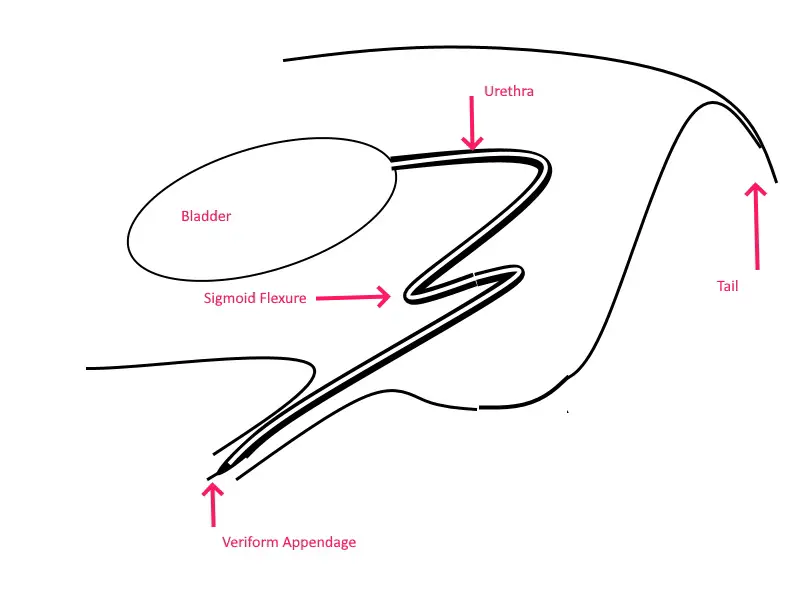
What are Urinary Calculi in Goats?
Urinary calculi are mineral stones, primarily made out of phosphorous, that get trapped in the urethra, which is the tube that leads from the animal’s bladder to the exterior. If the urethra is blocked, then the animal cannot urinate. The urine backs up in the urethra, and the bladder fills up, which causes pressure and severe pain. If the blockage is not treated quickly, the situation quickly escalates. Within 24-48 hours, the urethra or the bladder will rupture, which often leads to the goat’s death.
The stones are also called uroliths, the the stones and resulting obstruction are also known as clinical obstructive urolithiasis and caprine urolithiasis.
Phosphorus Stones are Usually the Cause
The word calculi is the plural form of the word calculus, which means a hard compact mass – a stone – formed of mineral salts. The word sounds a lot like the mineral calcium, so you might think that urinary calculi are due to calcium. However, this is not usually the case.
There are four main types of stones:
- Silicate
- calcium oxalate
- calcium carbonate
- phosphatic stones, include apatite, amorphous magnesium calcium phosphate, and struvite (magnesium ammonium phosphate)
According to the American Veterinary Medical Association, the most common of these are the phophorus based stones – struvite and amorphous magnesium calcium phosphate.
Improper Feeding Leads to Urinary Calculi
According to Michigan State University, urinary calculi are usually caused by improper feeding.
When a goat is fed too much phosphorous in relationship to the amount of calcium, then the calculi can develop in the bladder. This occurs when the goat food has the wrong phosphorous to calcium ratio, which can especially happen when the animals are fed too much concentrated feed (grains and pellets).
Urinary Calculi is almost always the result of improper feeding by the producer.
Michigan State University, MSU Extension
Calcium to Phosphorus Ratio – How much Phosphorous is Too Much?
Phosphorous and calcium are both important minerals for bone health. The ratio of these minerals in goat food needs to be 2-2.5:1 :: Calcium:Phosphorus. This means that the goat needs twice as much to two and a half times as much of calcium in their diet compared to phosphorus.
How does a Goat Process and Excrete Extra Phosphorus?
A goat’s body, used to dining on grasses and hay, has two mechanisms for eliminating phosphorous that is in excess of what it needs.
Excretion in Saliva
The unneeded phosphorus is first directed to the goat’s saliva. Then, as the goat munches on fibrous hay and grass, the saliva mixes in. The food is then processed through the goats gastrointestinal tract and the waste that is not digested, including the phosphorous from the saliva, comes out the other end as manure.
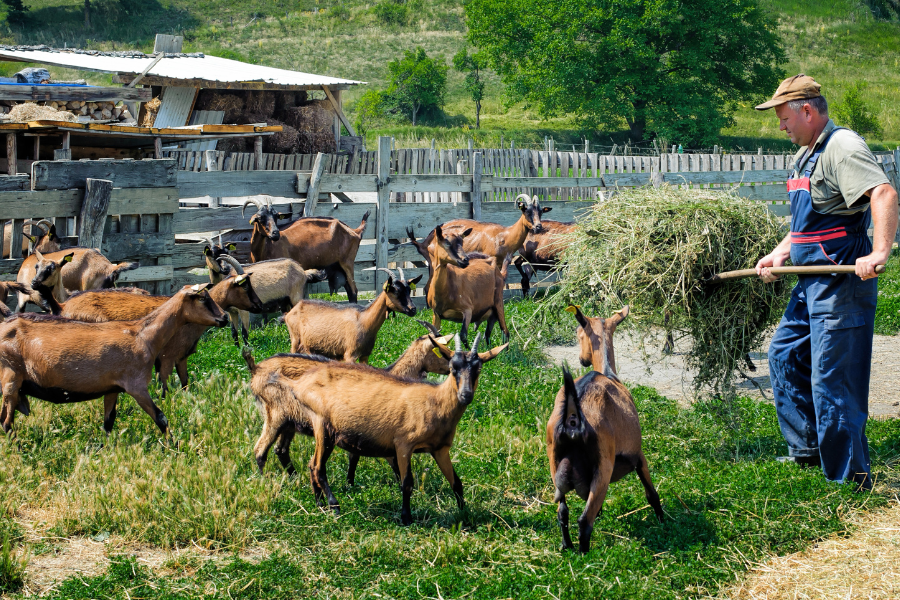
Excretion in Urine
Excess phosphorous that is not excreted in saliva travels to the kidneys, where it is filtered and excreted as urine.
Problems with A Grain Heavy Diet
There are three problems with a grain heavy diet, and they compound one another.
Decreased Saliva Flow
First, low roughage diets cause a decrease in saliva formation. A goat needs more saliva to chomp on fibrous plant matter than it does to chow down on grain. Thus, goats eating grains will remove less phosphorous via their saliva and more via their urine.
Decreased Water Intake
Second, goats chewing on roughage are more likely to drink more water. When goats eat grains and concentrated feed pellets, they drink less water. Thus their urine is more concentrated.
Concentrated Feeds have Improper Ratio of Calcium to Phosphorus
Third, many concentrated feeds have too much phosphorus compared to calcium.
Thus, goats eating grains and pellets make less saliva, which means more phosphorous goes into their urine. But since the goat is drinking less water, the amount of phosphorus in the urine gets concentrated. Then, since feeds contain higher levels of phosphorus, still more phosphorus is sent into the already concentrated urine.
As you can see, this is a recipe for disaster. The phosphorus can get so concentrated that it does not stay dissolved. It precipitates out of the urine with other minerals and turns into solid crystals, called urinary calculi, which then have to make their way down the long and winding urethra of the goat. If the calculi get stuck, then goat can’t urinate, and then a vet is needed or else the goat can die.
Other Causes and Contributing Factors of Urinary Calculi
Hay and Grass with High Phosphorus Content
Sometimes, the hay and grass that you feed to your goats has a high amount of phosphorous in it. This can be due to the fertilizers (such as chicken litter) used on the grass.
If you are having a problem with urinary calculi in your herd or have recently changed sources of roughage, get the food tested for mineral composition.
Males Goats with Narrow Urethras
Urinary Calculi are most likely to occur in male goats, because they have long urethras that have an S-shape to them.
Once a goat is castrated, its urethra stops growing, so young castrated goats (wethers) can have narrow urethras. This makes them more likely to get urinary calculi.
Pygmy goats are small in every way, including having urethras with small diameters. Thus these goats are susceptible to obstructions.
Dehydrated Goats
There are a number of reasons why goats may get dehydrated. For example, If their water source is contaminated, they won’t drink.
Ensure that your goat always has access to fresh water.
Some farmers provide their goats with salt to make them thirsty so that they drink., however, you should check with your veterinarian before providing any supplements, including salt.
Urinary Calculi in Goats Treatment – Main Treatments
If your goat has urinary calculi, contact your veterinarian. All treatments for urinary calculi require the care of a veterinarian.
The treatment of urinary calculi depends on the location of the obstruction, the size of the obstruction, whether the obstruction is partial or complete, the progression of the problem, and the economics of the situation.
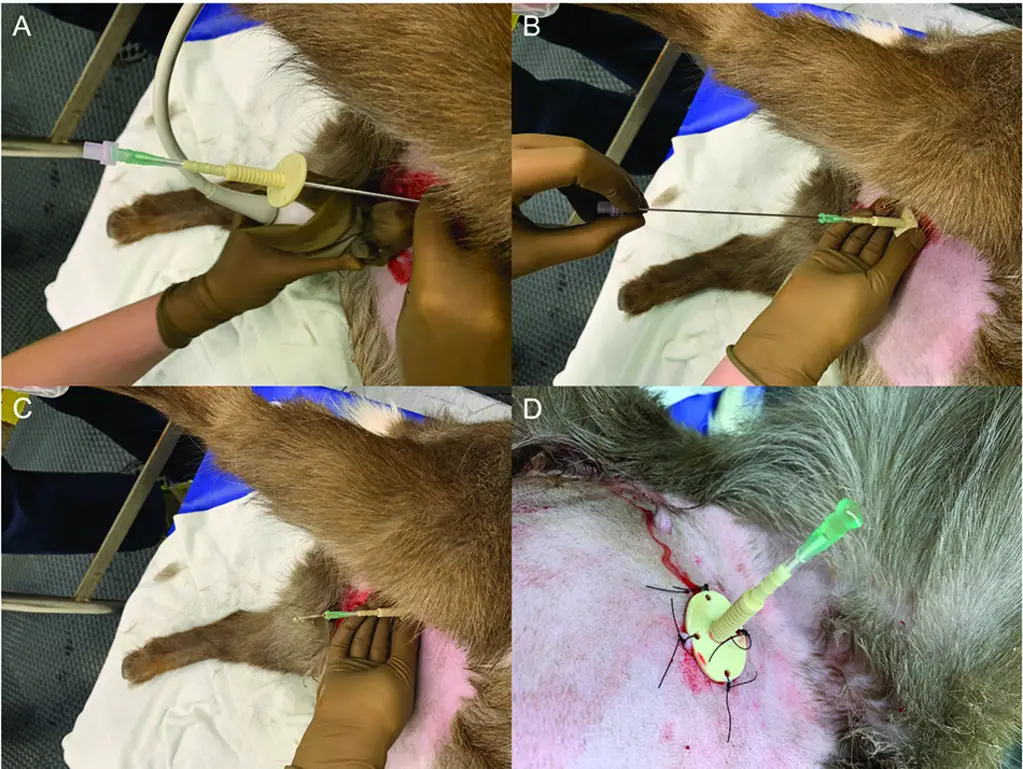
If the bladder and urethra have not ruptured, then there are more options available.
Treatment options can range from amputating the Veriform appendage (also called the urethra process) to euthanasia.
Surgical options that are available are shown in the chart below, and include:
- Amputate veriform appendage
- Insert a Bonanno catheter
- Bladder Marsupialization
- Tube Cystotomy
- Urethrotomy
- Urethrostomy
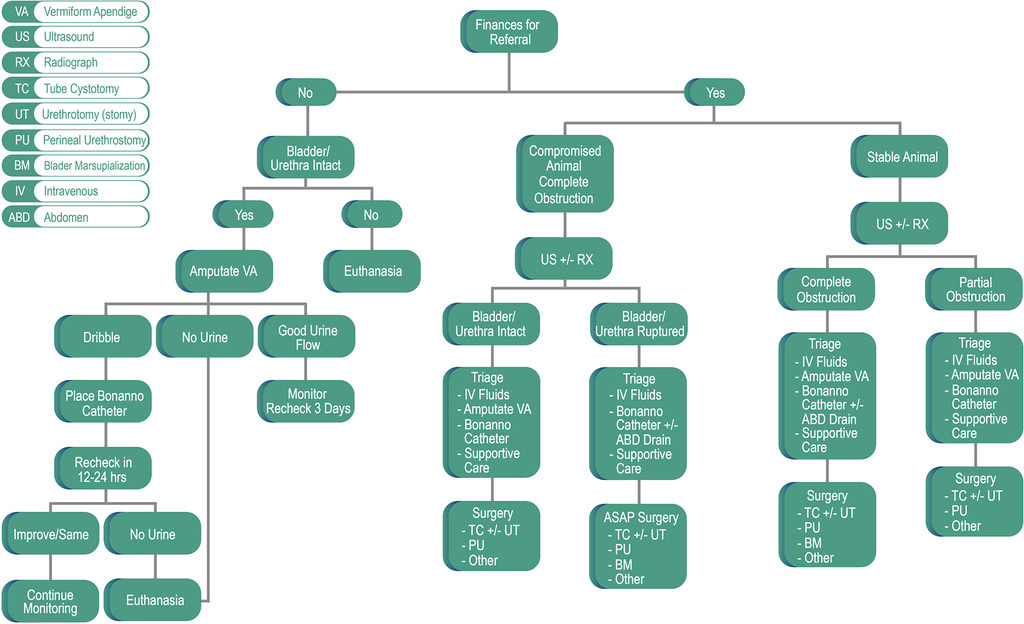
Home Remedies for Urinary Calculi in Goats
We do not recommend any home remedies for the treatment of urinary calculi in goats. The situation is a medical emergency, and you must contact your veterinarian for treatment advice.
Natural Treatment for Urinary Calculi in Goats
We do not recommend any natural remedies for the treatment of urinary calculi in goats. The situation is a medical emergency, and you must contact your veterinarian for treatment advice.
Note:
If your goat is unable to urinate, do not force it to drink; that will only cause the bladder to fill up faster.
Preventing Urinary Calculi
Proper feeding can reduce the risk of urinary calculi in goats.
Michigan State University, MSU Extension
Earlier we discussed that urinary calculi come about as a result of bad feeding practices. This is good news, because it means that this terrible condition is preventable!
The primary factor in preventing urinary calculi is to make sure your goats get 2-2.5 parts calcium for every 1 part phosphorous.
Additionally:
- Make sure that your goats always have access to plenty of fresh, clean water
- Wait as long as possible to castrate males. Waiting 5-6 months is preferred.
- Ensure your goats have plenty of grass and hay to eat, and test it to be sure that it meets the calcium to phosphorus ratio listed previously.
- Ensure your goats get adequate exercise
- Never feed horse feed to small ruminants
- Be very cautious with pellets and grains
Supplements
Supplements should only be added to your goat’s diet after consultation with your veterinarian.
Some farmers have had success with the following:
- Adding ammonium chloride to feed
- Colorado State University has a helpful table of Mixing Instructions
- Feeding diluted cranberry juice
- Feeding diluted apply cider vinegar
- Salt
- A cooked mixture of onion, garlic, lemon, and vinegar
Urinary Calculi in Goats Video
Urinary Calculi – Tips from a Vet – Dr. Robert Cobb, DVM
References:
- Small ruminant urinary obstruction: decision trees for treatment, AMVA American Veterinary Medical Association Vol 260, Issue 52 https://doi.org/10.2460/javma.22.02.0071
- ACVS American College of Veterinary Surgeons – Urolithiasis in Small Ruminants
- Michigan State University – Urinary Calculi in Sheep and Goats
- Colorado State University Extension


